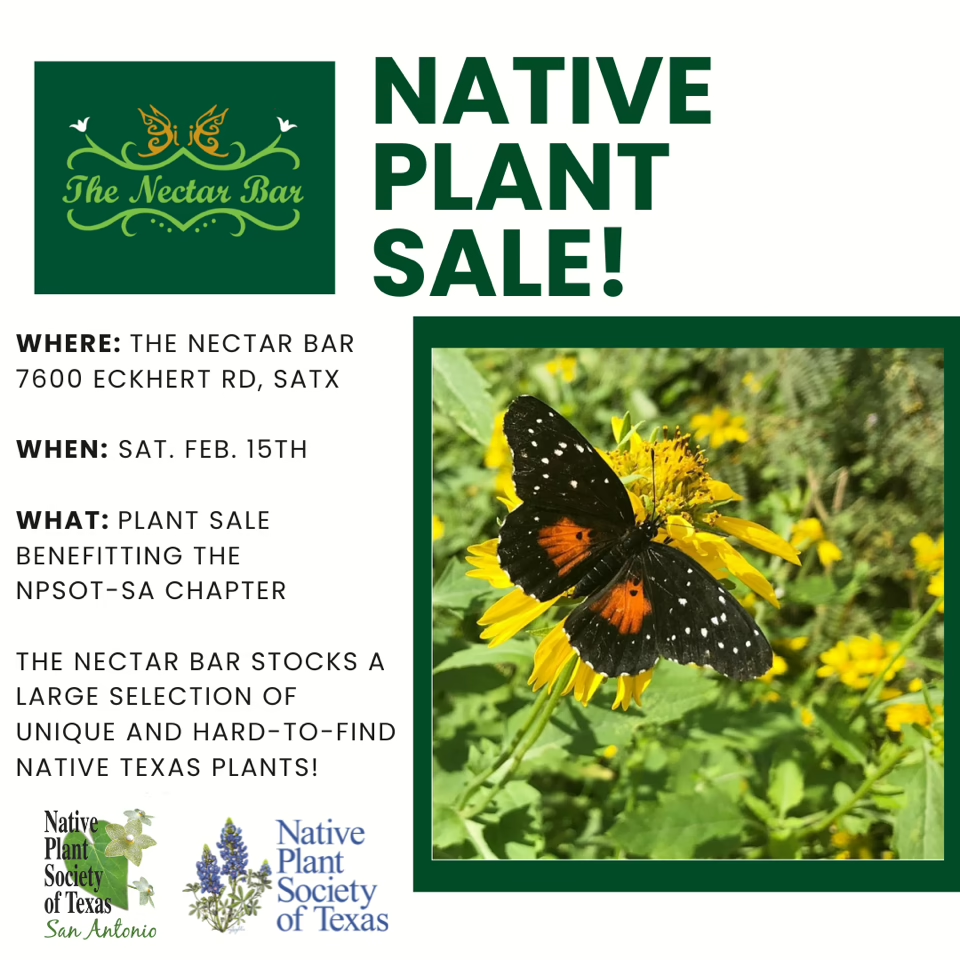NPSOT-SA Plant Sale At SAWS Spring Bloom

Mark your calendars! You will not want to miss this native plant sale! The Nectar Bar exclusively carries native plants that benefit our local ecosystem and that thrive in our unique climate. In addition to well know species, it stocks a large selection of unique and hard-to-find native Texas plants. Plus, every plant purchased on this date at the Nectar Bar will result in a financial contribution to our Chapter!
The Nectar Bar is one of our chapter’s NICE nurseries! To learn more about our NICE program Support our NICE Partners – Native Plant Society of Texas.
Interested in volunteering? The sale starts at 10am but we will be providing six plant associates to assist customers over various 2.5 hour shifts between 9:30 am and 3:30 pm. To register, click here.
Saturday, March 8, 2025 from 9 a.m. to 1 p.m at SAWS Headquarters, 2800 US Hwy 281 North.
Stay In Touch
Join our mailing list to learn about upcoming native plant sales.


